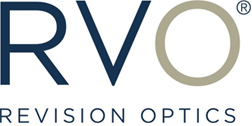Presbyopia, or age-related near vision loss, affects over 100 million adults in the U.S. starting around the age of 40. It is a natural part of the aging process and happens to nearly everyone over time. You may have presbyopia if you have difficulty reading things up-close like menus, text messages, and books. Well, not to worry — there are plenty of options for you to restore your vision back, or at least closer, to the vision of your youth!
Presbyopia Treatment: Eyeglasses
Whether reading glasses, prescribed eyeglasses with bifocal lenses, or progressive addition lenses (PALs), some variation of eyeglasses is the most common treatment for presbyopia, and it may be what you are using right now.
Bifocals, meaning two points of focus, support presbyopia by having two lens powers within one pair of eyeglasses. The bottom portion of the lens is designed to support near vision, or reading up-close. Then the top part of the bifocal lens is created to support distance vision. This type of treatment may take some time to get used to, but it is a common option to treat presbyopia.
In addition to supporting your presbyopic symptoms, PALs don’t carry the “old” stigma of wearing bifocals and are a viable option for someone who’s near vision is beginning to blur, but bifocals just don’t feel like the option for them. The lenses are also more blended, meaning the prescription change from distance, intermediate to near is progressive (hence the name) and not as abrupt as with bifocals.
Readers, most people’s go-to in correcting presbyopia, are arguably the easiest and most commonly used. The “on, off, on, off” problem arises when using readers. You know, put them on when you’re texting, take them off when you’re driving, back on while at your desk, etc. The never-ending cycle of on, off! Though readers are easy because you can grab a new pair at every corner pharmacy, the dependence on them and the ensuing game of lost and found with them can be maddening. However, readers are a solution for presbyopia.
Presbyopia Treatment: Contact Lenses
If you are suffering from the “on, off, on, off” routine with your readers, you can opt for contact lenses. There are two variations: multifocal contact lenses or monovision contact lenses.
Multifocal contact lenses, or contact lenses with multiple lens powers, like bifocal or another prescription, are similar to the above progressive or bifocal lenses in eyeglasses and are used to help with improving vision at all distances.
Monovision contact lenses, which one eye wears a distance prescription and the other a near vision prescription, is a good option if you already wear contacts and don’t want to be dependent on readers and/or you are not a candidate for bifocal contact lenses. Though the eyes still work together to see well at all distances, each eye has a different prescription contact in. One eye wears a contact to support near vision, the other a contact lens for distance.
Keep in mind, as you continue to age, your needed prescription will change and your lenses will need to be adjusted accordingly.
Presbyopia Treatment: Surgery
Monovision LASIK is a modified LASIK procedure that creates a similar effect of monovision as the monovision contact lens solution above. The difference, of course, is that no contacts are needed.
This is a modified procedure from the normal LASIK surgery because the surgeon only corrects the distance vision in one eye (usually the dominant one), and then purposely corrects the other eye to be mildly nearsighted. This helps with presbyopia because even slightly nearsighted eyes can still see objects up close with clarity and without the help of glasses. Though of course there is some compromise, just like monovision contact lenses, such as, less clarity in seeing distance, this procedure still leaves people with overall improved eyesight rather quickly.
The Raindrop® Near Vision Inlay is a small, transparent, curved disc called a corneal inlay. It’s made of approximately 80% water and from material similar to a soft contact lens. It is similar in makeup to the clear front part of the eye and is extremely thin. Raindrop® Near Vision Inlay offers a long-term solution to your presbyopia.
Usually implanted in the cornea of your non-dominant eye in a simple, LASIK-like procedure, the Raindrop® Near Vision Inlay will increase your depth of focus by gently reshaping the surface of the eye, primarily improving your ability to focus up close without affecting your ability to see distance.
Want to learn more about The Raindrop® Near Vision Inlay? Find a Raindrop specialist to schedule your consultation today!

